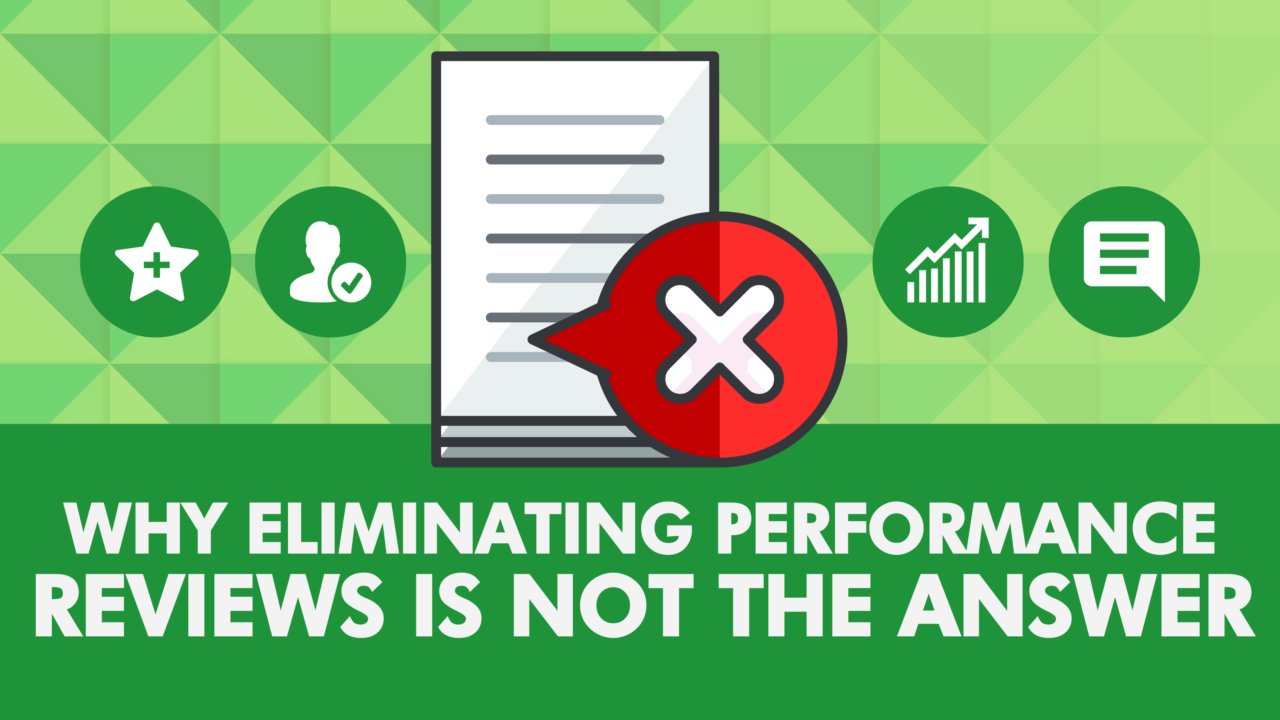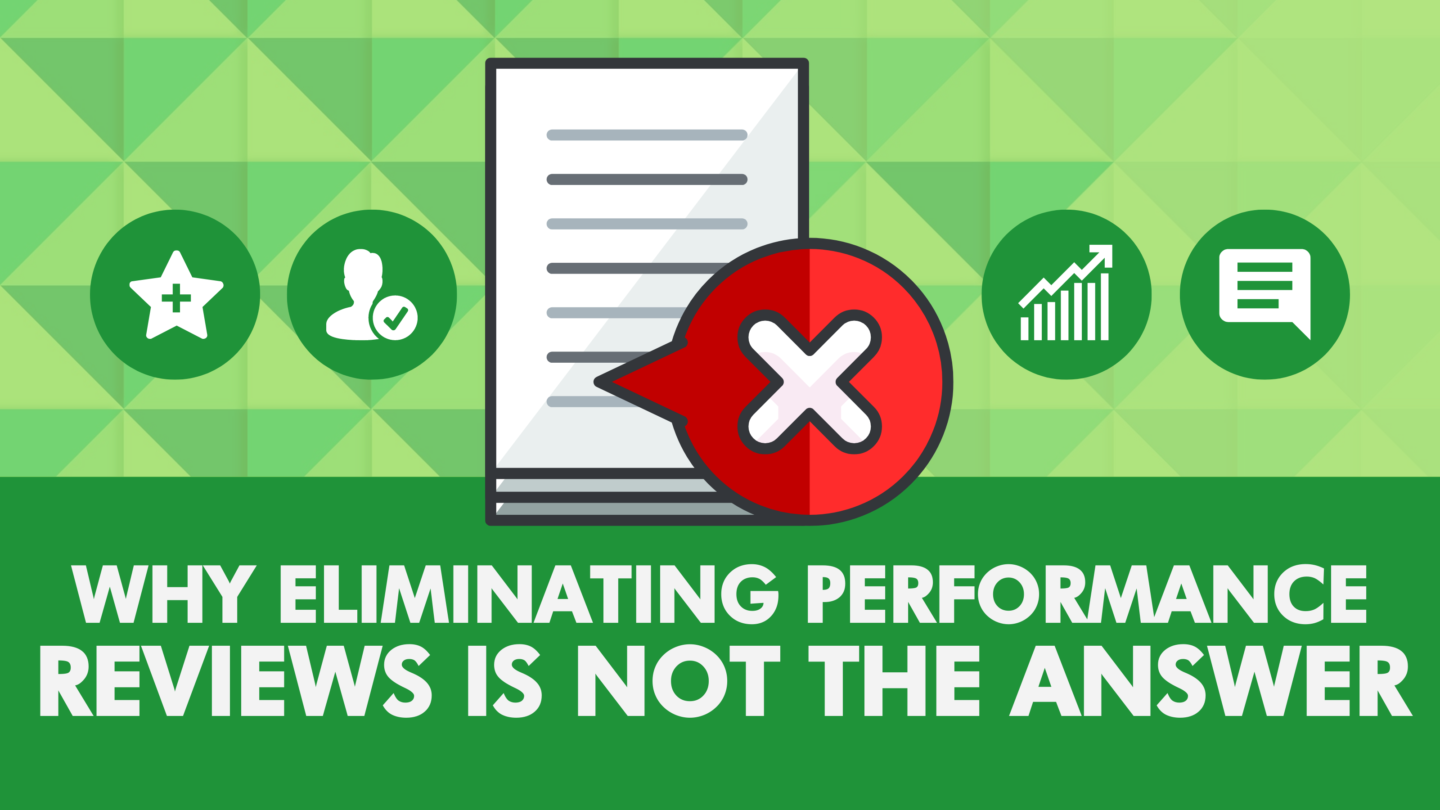
Why Eliminating Performance Reviews is Not the Answer
By: David Creelman
One of the most confusing debates in performance management is the talk about abolishing performance reviews. We hear that the once-a-year appraisal is too unpleasant and takes too much time, so it should be abolished. But wait, the proposed solution is multiple reviews over the course of a year; won’t that take even more time? We also hear that employees don’t like the appraisals that lead to pay decisions. Do they like it better if there is no appraisal meeting and raises are seemingly at the whim of their manager?
Trust me, there are some good ideas to be found in this debate if we cut through the hype. First, let’s be clear that this is all better understood as a reform or even an expansion of the performance review system. Not the abolition of it.
The how and why of multiple reviews
There is widespread agreement that performance management should be a series of conversations over the course of the year, not a single over-packed discussion. Josh Bersin estimates that 70% of multinationals are moving towards a model of frequent informal check-ins.[1]
The trick is deciding how those check-ins are structured. There are four major elements to consider when designing your check-ins:
1. Which performance reviews are required? Which are optional check-ins?
Good management (not just good performance management) requires many good conversations and check-ins over the course of the year. The performance management process should encourage as many optional meetings or informal discussions as appropriate for the individual. The process needs to include multiple check-ins (usually mid-year or quarterly) that are a little more formal.
2. What is covered in the required reviews?
Required reviews can cover whatever the manager and employee have on their minds, but they work best if there is a clear purpose for each one. One large organization uses the following topics: goal setting, feedback on performance, personal development, and the compensation decision. They also have required quarterly recognition meetings. At this organization, unsatisfactory performance is handled as a different HR process that is separate from regular performance management.
3. What additional features do we need?
If the work is project-oriented then the timing of the required reviews may be driven by the project cycle, not the calendar year. If the individual works on different teams then a best practice is to gather 360from the project team leaders and peers (ideally as a check-in at project milestones or sunset) in addition to their formal manager. In all cases, capturing information on an ongoing basis is helpful to ensure a better compensation decision.
4. How do we manage the compensation decision? Do we use ratings?
There is no process for making decisions about compensation that doesn’t have some pain points—which is why most of the press on performance management reform tends to ignore the topic. More on it later in this article.
Abolishing appraisals and other compensation decisions
There are three main options for making compensation decisions:
1. Pay everyone the same.
Unions typically have standard pay raises, so an appraisal meeting is not needed. Keep in mind that there may be other reasons to appraise performance, such as gathering data for HR analytics, however, the dreaded appraisal meeting is avoided.
2. Pay for future performance/market value.
Sports teams typically pay for future performance not past performance (we don’t care how good you once were, we care how good you will be). This can be applied to a business setting where you look at the market rate/potential of an individual and make a salary offer based on that. You will still need an appraisal of past performance to estimate their future performance, but you don’t need to share it with the employee. Instead of an appraisal meeting, you have something very much like a contract negotiation.
3. Pay for past performance.
Most organizations want to pay for past performance, and this means there needs to be an appraisal. You could do the appraisal in secret and skip the unloved appraisal meeting however that is probably a step in the wrong direction. When the manager and employee set clear goals that identify what “meets” and “exceeds” expectations, with periodic check-ins, then the review is much easier and results in improved employee engagement and more positive outcomes for the organization.
There is one intriguing possibility discussed in the research from the Center of Effective Organizations: you can do an appraisal without putting a specific rating on it (i.e. a ratingless review).[2] For example, a manager can discuss the year’s performance and say something like “Overall you hit expectations and this is the raise you get”; that may be exactly equivalent to scoring a 3 out of 5 however the vagueness might (or might not) be more palatable. Ledford’s research found that having more frequent reviews led to positive employee reactions and while the evidence on ratingless reviews was not conclusive, they did not seem to do any harm.
The role of technology
It would be remiss not to mention that one of the reasons that reform of the performance management system is possible is because of performance management technology. Performance management technology is more efficient and secure than emailing spreadsheets around. This enables HR organizations to have the time and energy to consider alternatives and to complete valuable analysis. It also makes it easy to prompt managers when they need to do reviews, remind them what the review should focus on, and record anything relevant. The prompts can appear in Outlook calendars as a check-in meeting, making it more likely to be actioned. Additionally, the technology creates a place to capture what the manager or employee feels is relevant to performance on an ongoing basis.
Poor performance and terminations
The issue of poor performance and terminations is a whole other topic. I like the idea of keeping this process separate from the main performance management cycle,
Wrapping up
It makes sense to move towards a performance management process that has multiple meetings. This should not be positioned as abolishing the review meeting. It’s also the case that it’s not simply a matter of saying “managers should have lots of conversations”; the system needs structure and HR has a number of design decisions they need to make.
It is also a good idea to emphasize feedback and development but if you pay for past performance then you cannot escape the need to make and communicate tough decisions about performance.
The reform of performance management won’t take all the pain out of the system, but it can make things better, especially if supported by appropriate technology.
[1] Peter Cappelli and Anna Tavis, The Performance Management Revolution, Harvard Business Review, October 2016 Issue HBR
[2] Gerald Ledford and George Benson, Ratingless Performance Reviews: A Quasi-Experiment CEO Working Paper Series G19-04(695) Nov 2019




